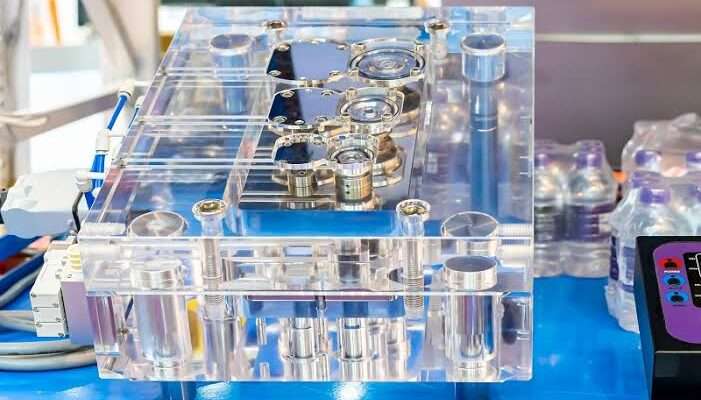Atteeq ur Rahman
Medical device plastic molding, particularly medical injection molding, plays a crucial role in producing components for various medical applications. One of the commonly used materials in this process is Polymethyl Methacrylate (PMMA), known for its transparency, biocompatibility, and impact resistance. To ensure the quality and precision of PMMA medical injection molding, specific process conditions must be meticulously controlled. Let’s delve into the key factors that influence the success of PMMA medical injection molding:
1. Temperature Control:
- Barrel Temperature: Maintaining precise control over the barrel temperature is essential for PMMA injection molding. Typically, temperatures ranging from 190°C to 240°C are suitable for processing PMMA resins.
- Mold Temperature: Controlling the mold temperature is crucial for achieving the desired surface finish and dimensional stability of the molded parts. Mold temperatures usually range between 40°C to 80°C for PMMA.
2. Injection Speed and Pressure:
- Injection Speed: Optimal injection speeds ensure proper flow and filling of the mold cavity without causing defects such as flow lines or air traps. PMMA typically requires medium injection speeds to prevent excessive shear heating.
- Injection Pressure: The injection pressure should be carefully adjusted to ensure complete filling of the mold cavity while avoiding excessive stress on the material. High pressures may lead to part warpage or internal stresses.
3. Cooling Time:
- Cooling Rate: Proper cooling is essential to solidify the molten PMMA resin within the mold cavity efficiently. The cooling rate influences the crystallinity and shrinkage of the final part. Controlled cooling rates help minimize warpage and improve dimensional accuracy.
- Cooling System: Utilizing an efficient cooling system within the mold ensures uniform cooling across the part, reducing cycle times and enhancing productivity.
4. Mold Design and Venting:
- Mold Design: The mold design should be optimized to minimize parting lines, gate vestiges, and other defects. Proper venting is essential to prevent trapped air, which can lead to voids or surface defects in the molded parts.
- Gate Design: Selecting the appropriate gate type and size is critical for achieving uniform filling and minimizing gate-related defects such as gate blush or hesitation marks.
5. Material Drying:
- Moisture Content: PMMA resins are hygroscopic and can absorb moisture from the surrounding environment, affecting the material’s properties and processability. Therefore, it is crucial to dry the resin to the recommended moisture level before injection molding.
In the realm of medical device plastic molding, mastering the intricacies of PMMA injection molding paves the way for advancements in medical technology and enhances patient care through the production of safe and reliable medical devices.
Fine-Tuning PMMA Medical Injection Molding for Superior Performance
In the realm of medical device plastic molding, precision and reliability are paramount. Polymethyl Methacrylate (PMMA) stands out as a preferred material for medical injection molding due to its exceptional properties, including transparency, biocompatibility, and durability. However, achieving optimal results in PMMA medical injection molding requires meticulous attention to detail and a thorough understanding of the process conditions.
6. Material Selection:
- Resin Grade: Selecting the appropriate PMMA resin grade is crucial, considering factors such as molecular weight, melt flow index, and additives. Medical-grade PMMA resins formulated with additives like UV stabilizers and antioxidants enhance the material’s suitability for medical applications.
- Colorants and Additives: When incorporating colorants or other additives into PMMA formulations, it’s essential to ensure compatibility and uniform dispersion to maintain the material’s properties and aesthetics.
7. Mold Maintenance and Cleaning:
- Regular Maintenance: Periodic maintenance of molds helps prevent wear and tear, ensuring consistent part quality and prolonging mold lifespan. Cleaning molds thoroughly between production runs prevents contamination and ensures adherence to stringent cleanliness standards in medical device manufacturing.
- Purge Compounds: Utilizing purge compounds during mold changeovers helps remove residual material and contaminants, reducing the risk of defects and improving process efficiency.
8. Process Monitoring and Optimization:
- Real-Time Monitoring: Implementing process monitoring systems allows for real-time observation of key parameters such as temperature, pressure, and injection speed. Continuous monitoring enables prompt detection of deviations and facilitates timely adjustments to maintain process stability.
- Statistical Process Control (SPC): Employing SPC techniques enables systematic analysis of process data to identify trends, detect variations, and optimize process parameters for enhanced repeatability and consistency.
9. Quality Assurance and Testing:
- Dimensional Inspection: Conducting dimensional inspections using precision measuring equipment ensures adherence to tight tolerances and specifications, verifying the dimensional accuracy of molded parts.
- Material Testing: Performing material testing, including mechanical, thermal, and biocompatibility tests, validates the suitability of PMMA for medical applications and ensures compliance with regulatory requirements such as ISO 10993.
10. Regulatory Compliance:
- Medical Device Regulations: Adhering to regulatory standards such as FDA regulations in the United States or CE marking requirements in Europe is essential for medical device manufacturers. Ensuring compliance with regulatory guidelines mitigates risks associated with product safety and quality.
- Documentation and Traceability: Maintaining comprehensive documentation throughout the manufacturing process, including material certifications, process validation records, and traceability data, facilitates regulatory compliance and supports product traceability.
Conclusion:
In the dynamic landscape of medical device manufacturing, optimizing PMMA medical injection molding processes is essential for meeting the demanding requirements of the healthcare industry. By incorporating advanced techniques, rigorous quality control measures, and a commitment to regulatory compliance, manufacturers can achieve superior results in producing PMMA medical components that contribute to the advancement of medical technology and the improvement of patient care.



